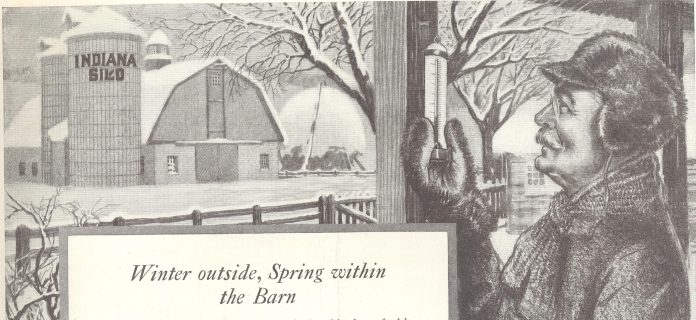If you’re like me, one of the first things you do on these cold mornings is peek at the thermometer to see how low the temperature is today.
Also, like me, you probably never give a thought to how the things are made.
I know, I know, most of today’s thermometers are digital and work by magic, but as I’m an old timer, I’m referring to the clever little glass tubes of mercury or red-dyed alcohol that have done duty as temperature indicators since the 17th century.
The Grand Duke of Tuscany is credited with making the first glass tube instrument in the mid-1650s using alcohol (one source claims it was brandy).
In 1714, a Dutch-German glass-blower and scientist named Gabriel Fahrenheit invented the mercury thermometer.
He also came up with the Fahrenheit scale with 32 degrees as freezing and 212 degrees as boiling.
Thirty years later, Anders Celsius, a Swede, worked out his scale of 100 degrees as freezing and zero the boiling point of water (the Celsius scale was reversed after his death in 1744).
A 1907 article in American Thresherman magazine described how a thermometer was made.
The instrument maker bought glass tubes in long lengths from a glass factory.
A glassblower then cut the tubes to length and, using his torch and blowpipe, formed the bulb at one end of each tube. The tubes were filled with dyed alcohol and left to stand for 24 hours.
The next day, each tube was heated until the alcohol rose clear to the top of the tube, at which time the glassblower closed the upper tube end and formed a little glass hook to ensure the tube was located properly in its frame.
The tubes were set aside until hundreds of them were made when they were gauged.
The bulb ends of the unmarked tubes were placed into melting snow or shaved ice, and the alcohol was allowed to reach its level.
This level was marked on the tube with a file nick, and it moved on to another workman who plunged the bulb into water kept at a steady 64 degrees, which was marked on the tube in the same way.
The last step in this gauging process consisted of putting the bulb into water kept at a constant 96 degrees, and the tube was marked as before.
This left each tube with three guide marks at intervals of 32 degrees apart.
Each tube was numbered, because unavoidable variations in the inside tube diameters caused each set of markings to vary slightly from the next.
A workman then took each tube and temporarily attached it to a backing frame of wood, tin or brass, making sure the small glass hook on the tube engaged a locating hole in the frame.
He made three tiny marks on the frame corresponding to the marks on the tube and numbered the frame to match the number on the tube, before placing tube and frame into a rack.
The full racks were taken to a final gauging room with steeply sloping tables.
Each table was marked exactly for the position of the thermometer frame and had a long, straight bar pivoted at the lower right corner of the table and extending diagonally across the work surface.
The left end of the bar was held in place by a ratchet, which allowed the bar to move the exact distance of two degrees.
As the American Thresherman article points out, “With the three scratches already made on the frame for a basis, the marker could hardly make a mistake in the degrees if he tried.”
The marker took each tube and frame, separated them and laid the frame into position on the table where, by advancing the bar one notch at a time, he marked the frame with a pen and India ink if wood, or with the tap of a steel die if tin or brass.
The tube with the corresponding number was then permanently mounted into its frame and the finished thermometer was ready to pack into boxes or crates and send to market.
I found a video on YouTube that shows how glass thermometers are made today and, while much of it is mechanized, there is still an amazing amount of handwork involved.
You can see the five-minute video at www.youtube.com/watch?v=AmFhx-mUmOE.
It’s interesting how many of the things we use every day and take for granted are so laborious to make.














Where in the world can i find an usa made thermometer?